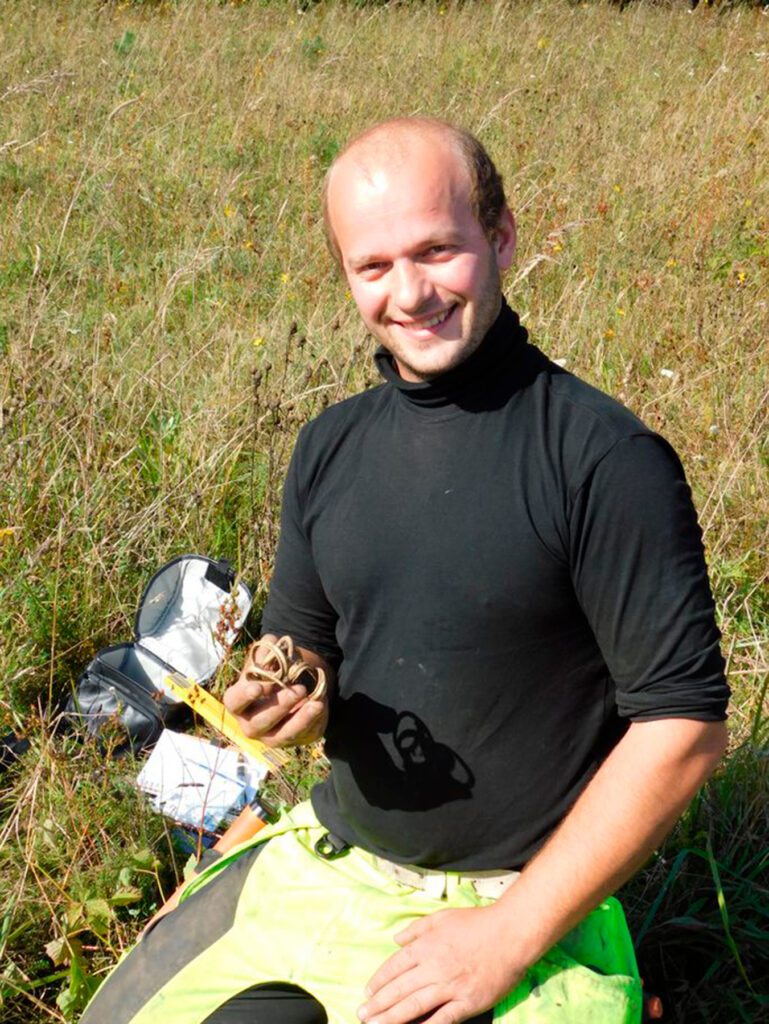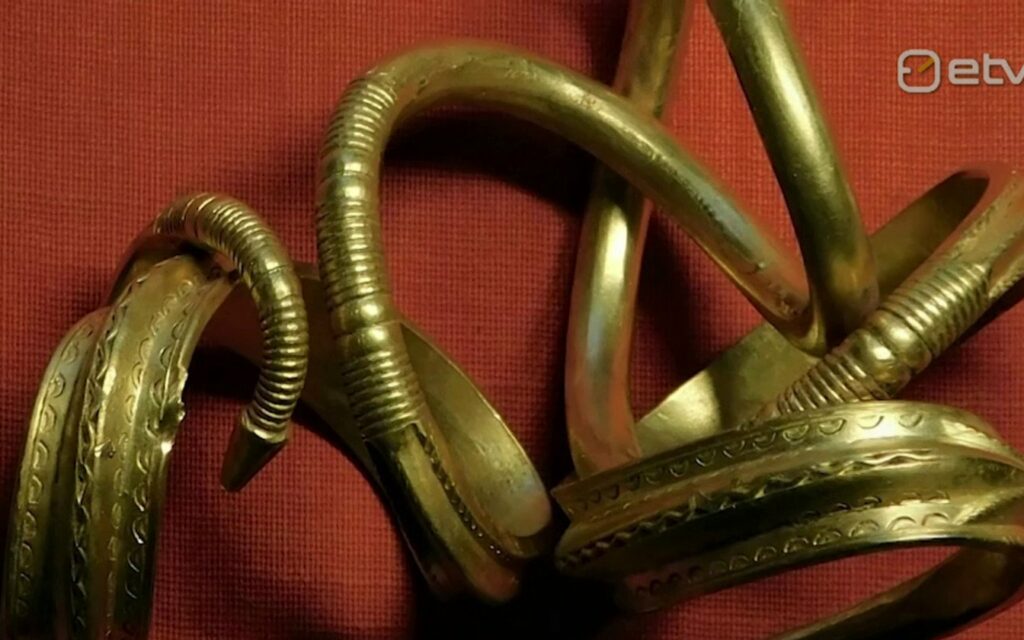Ancient Gold Bracelet Unearthed in Estonia
Hobbyists of metal detectors feel lucky when they come across an old button or coin instead of just the usual old nails or scrap metal.

However, amateur hunters don’t even dream of finding the type of thing that set off Jegor Klimov’s metal detector in Saaremaa earlier this month.
Among the items found at a 1,700-year-old sacrificial site were luxurious local crossbow brooches, some made of silver, some gold-plated silver, as well as Scandinavian-looking belt plaques with silver plates, writes regional Saarte Hääl (link in Estonian).
The most unique item to be found at the site, however, is a massive gold bracelet or collar from the 3rd century.
“With this find, the signal was sort of indistinct, sort of heay,” Klimov described. “I doubted whether or not to dig. But here it is! It’s like winning the jackpot! Unearthing something like this is amazing.
And it is amazing for Estonian history too, because nothing like this has been found in Estonia before. Gold finds are rare in Estonia, to begin with; we know of just four or five finds. But this is the coolest of them all.”
Archaeologist Marika Mägi, Ph.D., who led the search team, told Saarte Hääl that gold is rare in Estonian archaeology, and such a massive gold piece, with such fine details and ideological significance, has never been found before, which is why this find is a likely candidate for being the most valuable find of all time in Estonia.
“One can say that this is likely the most valuable single find, in the material sense, to be unearthed in Estonia,” Mägi explained to ETV news broadcast “Aktuaalne kaamera.”
“It is believed that whoever wore these, they were a symbol of belonging to the highest echelons of society. So these are not regular bracelets.
How this particular bracelet ended up in Saaremaa is an exciting question in its own right and one we’ll likely never get a real answer for.

This is a type of jewelry which throughout Scandinavia is considered one of the most significant items of the Roman Iron Age, and it is associated with royal power and royal families.”
The find is also significant in archaeological terms as well, she noted, as it presents a rather different picture of the first few centuries C.E. in Estonia.
Estonia’s most valuable jewelry find has been handed over to the Saaremaa Museum where, according to the museum director, it will be given a worthy spot in the museum’s new exhibition, which is currently in the planning stages.





